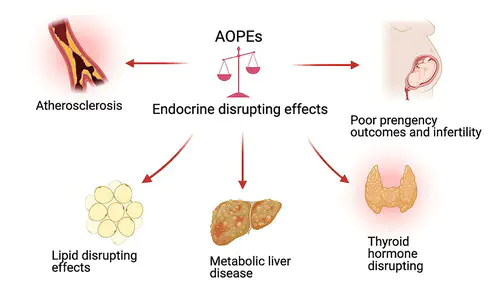Endocrine disrupting toxicity of aryl organophosphate esters and mode of action

Abstract
Organophosphate esters (OPEs) are frequently detected in the environment and human samples, bringing potential adverse effects to ecosystems and human health. Aryl OPEs (AOPEs), which are widely used in industrial and consumer products, are regarded as emerging endocrine disruptors. Taking triphenyl phosphate, 2-ethylhexyl diphenyl phosphate, tricresyl phosphate, and isomers of mono-, di-, and tri-isopropylated triaryl phosphates as representative AOPEs, this article reviewed their endocrine disrupting toxicity, metabolic disrupting toxicity, and their underlying molecular mechanisms via various signaling pathways. In general, AOPEs showed endocrine-disrupting effects by disrupting the hormone level and by behaving estrogen receptor, androgen receptor, mineralocorticoid receptor, glucocorticoid receptor, and thyroid hormone receptor agonistic/antagonistic activity. AOPEs also exerted metabolic disrupting effects in the cardiovascular system and liver by disrupting the lipids hemostasis and by binding with liver X receptor and peroxisome proliferator-activated receptor γ. Furthermore, we predicted the endocrine disrupting toxicity of emerging AOPEs by comparing their structures with the legacy AOPEs, but further studies should confirm the toxicity and the underlying molecular mechanisms of emerging AOPEs in the environment. Overall, this review provided a more in-depth understanding of the adverse health outcomes of AOPEs.